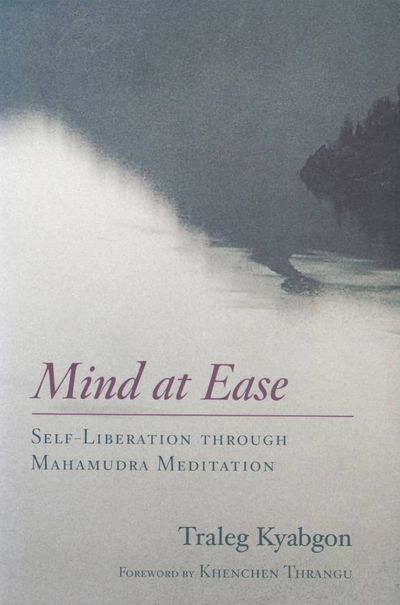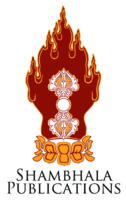No edit summary |
No edit summary |
||
| (4 intermediate revisions by the same user not shown) | |||
| Line 7: | Line 7: | ||
|BookEssay=In this book the author explains. spiritual cultivation from the Vajrayana perspective on the common preliminaries, the four immeasurables, tranquillity meditation, and insight meditation. In particular, he elucidates the need to develop the correct view. | |BookEssay=In this book the author explains. spiritual cultivation from the Vajrayana perspective on the common preliminaries, the four immeasurables, tranquillity meditation, and insight meditation. In particular, he elucidates the need to develop the correct view. | ||
The author of this text is Kyabje Traleg Rinpoche, the emanation of Saltong Shogam, one of the three principal disciples of the physician Gampopa, who is the common lineage forefather of the Kagyu tradition. This line of tulkus successively reincarnated, with each bearing the name Nyima. The ninth one, whose name is Karma Tenpa Rabgye Thinley Nyima Gocha Pal Zangpo, was recognized by the glorious sixteenth Karmapa, Rangjung Rigpe Dorje. Through his vision and faculty of foreknowledge, one year prior to conception, in the year of the Snake, a prediction letter was given with the instruction that this letter should remained sealed for a period of one year arid opened only on the tenth day of the first month of the Wood Sheep year. From the central part of Tibet a search was launched to eastern Tibet, where the Traleg tulkus had their seat at Thrangu Monastery. Upon opening the letter at the appointed time, the search party was led to the home of his parents: his father, Gyurme Lodro, and his mother, Pema Zung. The house was located west of Thrangu Monastery, three days journey by horse, where Traleg Rinpoche had just taken birth in the year of the Sheep, thus confirming the prediction letter to the amazement of all. | The author of this text is Kyabje Traleg Rinpoche, the emanation of Saltong Shogam, one of the three principal disciples of the physician Gampopa, who is the common lineage forefather of the Kagyu tradition. This line of tulkus successively reincarnated, with each bearing the name Nyima. The ninth one, whose name is Karma Tenpa Rabgye Thinley Nyima Gocha Pal Zangpo, was recognized by the glorious sixteenth Karmapa, Rangjung Rigpe Dorje. Through his vision and faculty of foreknowledge, one year prior to conception, in the year of the Snake, a prediction letter was given with the instruction that this letter should remained sealed for a period of one year arid opened only on the tenth day of the first month of the Wood Sheep year. From the central part of Tibet a search was launched to eastern Tibet, where the Traleg tulkus had their seat at Thrangu Monastery. Upon opening the letter at the appointed time, the search party was led to the home of his parents: his father, Gyurme Lodro, and his mother, Pema Zung. The house was located west of Thrangu Monastery, three days journey by horse, where Traleg Rinpoche had just taken birth in the year of the Sheep, thus confirming the prediction letter to the amazement of all. | ||
Rinpoche is exceptionally learned and demonstrates marked and genuine spiritual activity. He has undergone extensive study and experience in the traditional Buddhist training as well as having studied the contemporary mind sciences. His book is bound to generate both certainty and ease of understanding and will, with its many outstanding qualities, bring tremendous benefit to all spiritual seekers in the West. Please, students of the Dharma, take this to heart. | Rinpoche is exceptionally learned and demonstrates marked and genuine spiritual activity. He has undergone extensive study and experience in the traditional Buddhist training as well as having studied the contemporary mind sciences. His book is bound to generate both certainty and ease of understanding and will, with its many outstanding qualities, bring tremendous benefit to all spiritual seekers in the West. Please, students of the Dharma, take this to heart. | ||
KHENCHEN THRANGU RINPOCHE,<br>tutor to His Holiness seventeenth Gyalwa Karmapa,<br>Urgyen Thinley Dorje, at Karma Triyana Dharmachakra,<br>Woodstock, New York, 2 August 2003. | |||
|BookToc=* {{i|FOREWORD by Khenchen Thrangu |xi}} | |BookToc=* {{i|FOREWORD by Khenchen Thrangu |xi}} | ||
* {{i|PREFACE |xiii}} | * {{i|PREFACE |xiii}} | ||
| Line 42: | Line 41: | ||
* {{i|TRALEG KYABGON'S CENTERS|250}} | * {{i|TRALEG KYABGON'S CENTERS|250}} | ||
* {{i|INDEX|251}} | * {{i|INDEX|251}} | ||
|PublisherLogo=File:Shambhala Logo-Color flame with name.png | |||
|StopPersonRedirects=No | |||
|AddRelatedTab=No | |AddRelatedTab=No | ||
}} | }} | ||
Latest revision as of 18:24, 29 June 2023
In this uniquely insightful overview and practice guide, Traleg Kyabgon presents a thorough introduction to the Kagyu lineage's Mahamudra tradition. The author's approach is straightforward—he presents the Mahamudra teachings as a means of seeing things in, as he says, "a positive and open light. Even things we might normally regard as bad and undesirable can be interpreted in a more uplifting way due to the expansiveness of the Mahamudra vision." Mahamudra—which means "great seal" or "great symbol," referring to the symbol or mark of ultimate reality, or emptiness—points to the true nature of mind as well as the ultimate insubstantiality of all things.
The book includes an exploration of Mahamudra fundamentals and thorough explanations of Ground, Path, and Fruition Mahamudra, including meditation techniques for investigating, experiencing, and contemplating these teachings. (Source: Shambhala Publications)
| Citation | Kyabgon, Traleg. Mind at Ease: Self-Liberation through Mahamudra Meditation. Boston: Shambhala Publications, 2004. |
|---|---|


